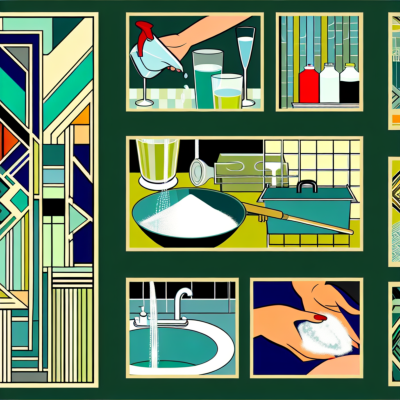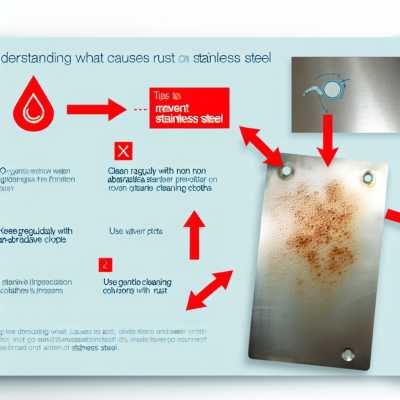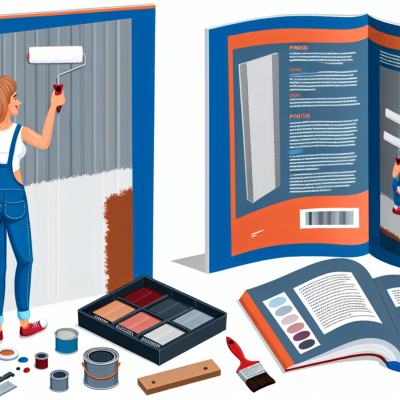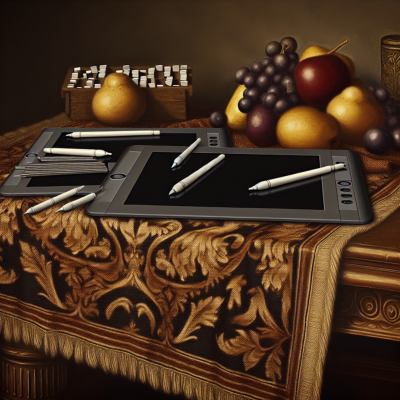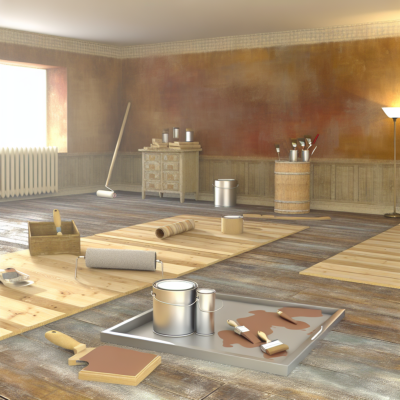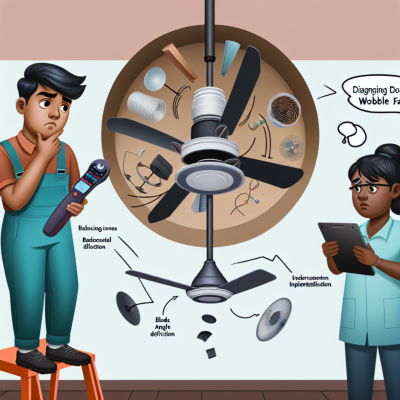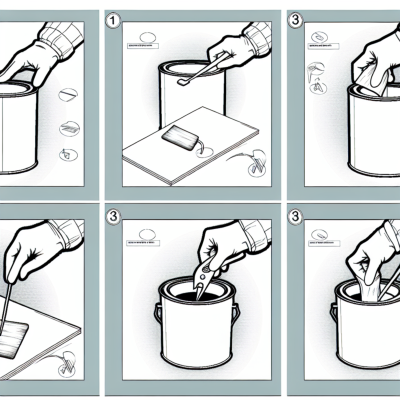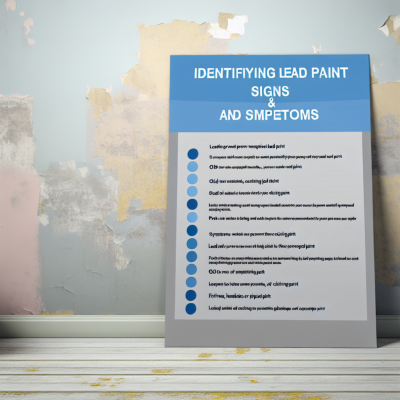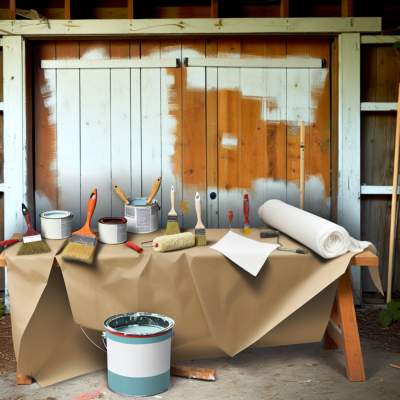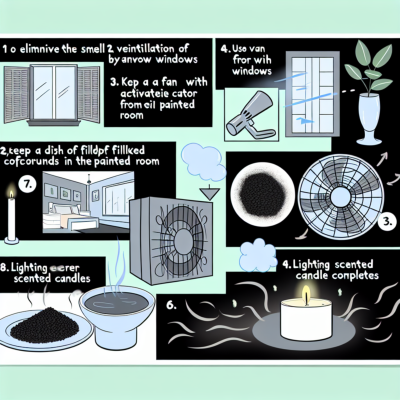Exploring the transformation of your home's uPVC doors through the art of painting? Look no further than this ultimate guide on how to paint for upvc doors, paint upvc door , and paint for plastic doors . Filled with practical case studies, advice, and talking points, it is specifically crafted to address your queries on can you paint a upvc door, can a upvc door be painted , and how to paint upvc door . Dive into the possible strategic eye-catching coverage on the age-old debate of how to paint upvc and how to paint upvc front door , as we tackle subjects like the yearn for upvc door paint white and outline various ways to paint front door paint upvc . Whisk through the world of uPVC, smoothly touching on buzz concepts such as painting plastic front door and the do-it-yourself spirit of how to paint upvc doors.
uPVC doors have become increasingly popular in recent years due to their durability, low maintenance, and energy efficiency. However, one common concern among homeowners is the limited color options that come with uPVC doors. Fortunately, painting uPVC doors is a simple and effective way to transform their appearance and add a personal touch to any home.
paint peeling in bathroom
When it comes to painting uPVC doors, proper preparation is key. Before starting, it is important to clean the door thoroughly to remove any dirt, dust, or grease. A mixture of warm water and mild detergent can be used for this purpose. Once the door is clean and dry, sanding the surface lightly with fine-grit sandpaper will help the paint adhere better.
Choosing the right type of paint is crucial for achieving long-lasting results. Acrylic-based paints are recommended for uPVC doors as they are flexible and can withstand the expansion and contraction that occurs with temperature changes. It is also important to select a paint color that complements the overall aesthetic of the home.
Applying the paint to uPVC doors requires a careful and methodical approach. Start by applying a coat of primer to ensure good adhesion and coverage. Once the primer is dry, multiple thin coats of paint should be applied, allowing sufficient drying time between each coat. It is important to follow the manufacturer's instructions regarding the drying time.
With a little patience and attention to detail, painting uPVC doors can be a rewarding and cost-effective way to enhance the look of any home. Whether it's a fresh coat of paint to revitalize an old uPVC door or a bold color choice to make a statement, mastering the art of painting uPVC doors allows homeowners to unleash their creativity and make a lasting impression.
Can You Paint uPVC Doors: Debunking Myths
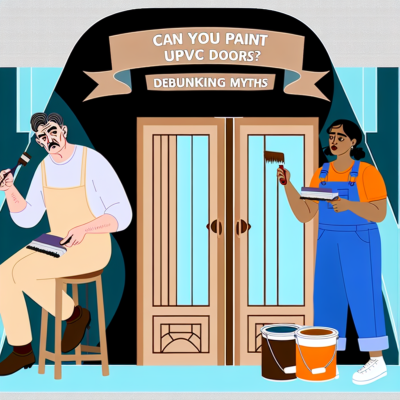
There are several myths surrounding the idea of painting uPVC doors. Many people believe that it is not possible to paint uPVC doors or that the paint will not adhere properly. However, these are just misconceptions that can be easily debunked.
Myth 1: uPVC doors cannot be painted - This is not true. It is entirely possible to paint uPVC doors, and many homeowners have successfully done so. With the right preparation and materials, you can achieve a beautiful and long-lasting finish.
Myth 2: The paint will not adhere to uPVC - This is also a common misconception. While uPVC has a smooth surface that may not accept paint as easily as other materials, there are specially formulated paints available that are designed to adhere to uPVC surfaces. By using the right type of paint and following the proper application techniques, you can ensure that the paint will adhere properly and provide a durable finish.
Myth 3: The paint will peel or chip easily - Another myth that is not true. When done correctly, painted uPVC doors can be just as durable as factory-finished uPVC doors. Proper surface preparation, including cleaning and sanding, along with using high-quality paint and primer, will help ensure a long-lasting finish that resists peeling and chipping.
Myth 4: Painting uPVC doors will void the warranty - While it is always a good idea to check with the manufacturer or supplier, most warranties do not specifically exclude painting uPVC doors. As long as the proper techniques and materials are used, painting your uPVC doors should not affect the warranty. However, it is important to follow any guidelines provided by the manufacturer to avoid any potential issues.
In conclusion, it is definitely possible to paint uPVC doors, and with the right preparation and materials, you can achieve a professional-looking finish that will last for years. Don't let these myths deter you from giving your uPVC doors a fresh new look with a coat of paint.
Is painting a UPVC door a good idea?
Painting a UPVC door can be a great way to refresh its appearance and give it a new lease of life. However, it is important to consider a few factors before deciding to paint a UPVC door.
Firstly, it is essential to choose the right type of paint for the job. UPVC surfaces require a specific type of paint that is designed to adhere to the material and withstand the elements. Using the wrong type of paint can lead to peeling, cracking, and overall poor results.
Secondly, proper preparation is key when painting a UPVC door. The surface should be thoroughly cleaned and free from any dirt, grime, or grease. Any existing paint should be sanded down to create a smooth and even base for the new coat of paint.
Additionally, it is important to consider the color choice. UPVC doors are usually available in a range of standard colors, and painting them a different color can have an impact on their overall appearance and may affect the warranty. It is advisable to choose a color that complements the style of your home and is unlikely to go out of fashion.
Lastly, it is worth noting that painting a UPVC door may void any existing warranty. Before proceeding with the paint job, it is recommended to check with the manufacturer or supplier to ensure that painting the door will not affect any warranty or guarantee.
In conclusion, painting a UPVC door can be a good idea if done correctly. It can provide a cost-effective way to update the look of your door and enhance the overall aesthetic of your home. However, it is important to use the right type of paint, properly prepare the surface, choose a suitable color, and consider any warranty implications before proceeding with the paint job.
Choosing the Right Paint for uPVC and Plastic Doors

When it comes to painting uPVC and plastic doors, it's important to choose the right paint that will adhere well and provide a long-lasting finish. Here are some factors to consider when selecting the paint for your doors:
Type of paint: Not all paints are suitable for uPVC and plastic surfaces. Look for paints specifically designed for these materials. Acrylic-based paints are a popular choice as they provide good adhesion and durability.
Color: Consider the color you want for your doors. Some paints may have limited color options for uPVC and plastic surfaces, so make sure to choose a paint that offers the color you desire.
Finish: Decide on the finish you want for your doors. Matte or satin finishes are commonly used for uPVC and plastic doors as they provide a smooth and even appearance. Glossy finishes can also be used, but they may require more preparation and maintenance.
Preparation: Proper preparation is crucial for achieving a professional-looking finish. Clean the doors thoroughly and remove any dirt, grease, or loose paint. Sand the surface lightly to create a rough texture that will help the paint adhere better.
Application: Follow the manufacturer's instructions for application. Use a brush or roller to apply the paint evenly, working in small sections. Allow each coat to dry completely before applying the next one.
Drying time: Different paints have different drying times, so make sure to read the label and allow enough time for each coat to dry before closing or using the doors. This will help prevent smudging or damage to the finish.
Weather resistance: If your doors are exposed to the elements, choose a paint that offers good weather resistance. This will ensure that the color and finish of your doors stay vibrant and intact even in harsh conditions.
Maintenance: Consider the maintenance required for the paint you choose. Some paints may require periodic touch-ups or reapplication to maintain their appearance. Choose a paint that fits your maintenance preferences and schedule.
By considering these factors and choosing the right paint for your uPVC and plastic doors, you can achieve a beautiful and long-lasting finish that will enhance the appearance of your home.
things to do in summer
Do you need special paint for uPVC?
When it comes to painting uPVC doors, using the right paint is essential to ensure a long-lasting and professional finish. While uPVC doors are durable and low-maintenance, they can fade or become discolored over time. Painting them can not only refresh their appearance but also protect them from the elements.
So, do you need special paint for uPVC? The answer is yes. It is important to use a paint specifically designed for uPVC surfaces to achieve the best results. Regular paint may not adhere properly to uPVC and may peel or flake off over time.
Special uPVC paint is formulated to bond with the surface of the door, providing excellent adhesion and durability. It is also designed to withstand UV rays, preventing color fading and yellowing. Additionally, uPVC paint is flexible, allowing it to expand and contract with the door as temperatures change, without cracking or peeling.
When choosing uPVC paint, look for products that are labeled as suitable for uPVC surfaces. These paints are typically water-based and come in a variety of finishes, such as gloss, satin, or matte. They are available in a wide range of colors, allowing you to select the perfect shade for your uPVC door.
how to remove rust from stainless steel
Before painting your uPVC door, it is important to prepare the surface properly. Clean the door thoroughly using a mild detergent and warm water to remove any dirt, grease, or grime. Rinse it well and allow it to dry completely before applying the paint.
When applying the paint, use a brush or roller specifically designed for uPVC surfaces. Follow the manufacturer's instructions regarding drying times and the number of coats required. It is generally recommended to apply two or more thin coats for the best results.
By using the right paint and following the proper painting techniques, you can transform the look of your uPVC door and give it a fresh, vibrant appearance. Whether you want to change the color or simply refresh the existing one, painting uPVC doors can be a cost-effective way to enhance the overall aesthetic of your home.
Step-by-Step Guide to Painting uPVC Doors
Painting uPVC doors is a great way to update the look of your home without spending a fortune on replacement doors. With the right materials and techniques, you can achieve a professional-looking finish that will last for years. Follow this step-by-step guide to painting uPVC doors:
- Clean the door: Start by thoroughly cleaning the door to remove any dirt, grease, or grime. Use a mild detergent and warm water, and scrub the door with a sponge or soft brush. Rinse the door with clean water and allow it to dry completely before moving on to the next step.
- Remove hardware: If your uPVC door has any hardware such as handles or letterboxes, remove them before painting. This will make it easier to paint the door and ensure a smooth finish. Keep the hardware in a safe place so that you can reattach it later.
- Apply primer: Before painting, it's important to apply a primer to the uPVC door. This will help the paint adhere to the surface and provide a more durable finish. Use a primer that is specifically designed for uPVC and follow the manufacturer's instructions for application.
- Choose the right paint: Select a paint that is suitable for uPVC surfaces. Look for a paint that is designed to be flexible and resistant to cracking or peeling. You can choose from a wide range of colors to match your home's décor.
- Apply the paint: Use a brush or roller to apply the paint to the uPVC door. Start with the edges and corners, and then move on to the larger surfaces. Apply thin, even coats of paint, allowing each coat to dry before applying the next one. This will help prevent drips or runs in the paint.
- Reattach hardware: Once the paint is dry, you can reattach any hardware that you removed earlier. Make sure that it is securely fastened and properly aligned.
- Clean up: After you have finished painting, clean up any paint spills or drips immediately. Use a damp cloth or sponge to wipe away any excess paint. Dispose of any paint cans or brushes according to local regulations.
By following these steps, you can successfully paint your uPVC doors and give them a fresh new look. Remember to take your time and be patient, as proper preparation and application are key to achieving a professional finish. Enjoy your newly painted doors!
How do you prep a uPVC door for painting?
Before painting a uPVC door, it is important to properly prepare the surface to ensure the best results. Here are the steps to prep a uPVC door for painting:
1. Clean the door: Start by thoroughly cleaning the uPVC door using warm soapy water and a sponge or soft cloth. Remove any dirt, dust, or debris from the surface. Rinse the door with clean water and allow it to dry completely. |
2. Sand the surface: Using a fine-grit sandpaper, gently sand the uPVC door to create a rough surface for better paint adhesion. Be careful not to apply too much pressure or sand too aggressively, as this can damage the door. Wipe away any sanding dust with a clean cloth. |
3. Apply a primer: Before painting, it is recommended to apply a coat of primer specifically designed for uPVC surfaces. This will help the paint adhere better and provide a smoother finish. Follow the manufacturer's instructions for application and drying time. |
4. Choose the right paint: Select a high-quality paint that is suitable for uPVC surfaces. Look for a paint that is specifically formulated to adhere to plastic and is designed for exterior use. Consider using a paint with UV protection to prevent fading and yellowing over time. |
5. Apply the paint: painting after removing wallpaper Using a brush or a roller, apply the paint to the uPVC door in thin, even coats. Start at the top and work your way down, making sure to cover all areas. Allow each coat to dry completely before applying the next one. Follow the manufacturer's instructions for drying time. |
6. Finish and protect: Once the final coat of paint is dry, consider applying a clear topcoat or sealer to protect the uPVC door from scratches and external elements. This will help prolong the life of the paint and keep the door looking fresh for longer. |
Can you paint a uPVC door with a roller or brush?
Yes, you can paint a uPVC door with either a roller or a brush. Both methods have their advantages and it ultimately comes down to personal preference and the desired finish.
If you choose to use a roller, make sure to use a foam roller specifically designed for smooth surfaces. This will help to achieve an even and streak-free finish. Start by applying a thin coat of primer to the door, allowing it to dry completely before applying the paint. Once the primer is dry, use the roller to apply the paint in long, smooth strokes, working from top to bottom. Be sure to apply multiple thin coats, allowing each coat to dry before applying the next.
If you prefer to use a brush, opt for a synthetic bristle brush that is suitable for use with water-based paints. Start by applying a thin coat of primer to the door, using long, even strokes. Allow the primer to dry completely before applying the paint. When applying the paint, use the brush to work the paint into the surface, making sure to cover all areas evenly. Again, apply multiple thin coats, allowing each coat to dry before applying the next.
It is important to note that uPVC is a type of plastic, so proper surface preparation is crucial for the paint to adhere properly. Thoroughly clean the door with a mild detergent and water to remove any dirt or grime. Use a fine-grit sandpaper to lightly roughen the surface, which will help the primer and paint to bond. Make sure to wipe away any dust or debris before applying the primer.
| Advantages of using a roller | Advantages of using a brush |
|---|---|
| Provides a smooth finish | Allows for more control |
| Quick and easy to use | Can reach small or intricate areas |
| Less likely to leave brush marks | Good for creating texture |
Ultimately, the choice between using a roller or brush to paint a uPVC door comes down to personal preference and the desired finish. Whichever method you choose, make sure to properly prepare the surface and apply multiple thin coats for the best results.
Does uPVC paint need primer?
When it comes to painting uPVC doors, using a primer is highly recommended. A primer creates a smooth and stable surface for the paint to adhere to, ensuring better adhesion and durability of the paint job.
Priming is especially important if your uPVC door has a glossy or smooth surface, as these types of surfaces can be difficult for paint to stick to. The primer helps to create a rougher surface for the paint to grip onto, improving its longevity.
Additionally, a primer can also help to seal the uPVC surface, preventing any moisture or contaminants from seeping into the material. This can help to protect your uPVC door from potential damage and ensure a longer lifespan.
It's important to choose a primer that is specifically designed for use on uPVC surfaces. These primers are formulated to provide excellent adhesion to uPVC and can help to ensure a smooth and professional-looking finish.
In summary, while it is possible to paint uPVC doors without a primer, using one is highly recommended. A primer helps to improve the adhesion and durability of the paint job, especially on glossy or smooth surfaces. It also helps to seal the uPVC surface, protecting it from potential damage. Choose a primer specifically designed for uPVC surfaces for the best results.
Tips for Achieving a Professional Finish on uPVC Front Doors
When it comes to painting uPVC front doors, achieving a professional finish is essential to enhance the overall appearance of your home. Here are some tips to help you achieve a flawless result:
1. Clean the surface: Before painting your uPVC front door, it's crucial to clean the surface thoroughly. Use a mild detergent and warm water to remove any dirt, grease, or grime. Rinse it well and allow it to dry completely before proceeding.
1010 angel number
2. Sand the door: To ensure proper adhesion of the paint, lightly sand the uPVC door using a fine-grit sandpaper. This will help remove any gloss and create a rough surface for the paint to adhere to. Remember to wipe away any dust with a damp cloth after sanding.
3. Use first: Applying a primer specifically designed for uPVC surfaces is essential to achieve a professional finish. The primer will help the paint adhere better and provide a smooth base for the topcoat. Follow the manufacturer's instructions for the application and drying time.
4. Choose the right paint: Opt for a high-quality paint that is specifically formulated for uPVC surfaces. Look for a paint that offers durability, weather resistance, and UV protection to prevent fading and yellowing over time. Consider using a paint that matches the style and color of your home's exterior.
5. Apply thin coats: It's better to apply thin coats of paint rather than thick layers. This will help achieve a smoother finish and minimize the risk of drips or brush marks. Allow each coat to dry completely before applying the next one, following the manufacturer's recommended drying time.
6. Use a brush or roller: Decide whether to use a brush or roller based on the desired finish and the texture of your uPVC front door. A brush is great for reaching intricate areas and achieving a smooth finish, while a roller can cover larger surfaces more quickly. Use a high-quality brush or roller to ensure even application.
7. Pay attention to drying time: Proper drying time is crucial to avoid smudging or ruining the paint finish. Make sure to follow the manufacturer's instructions regarding drying time between coats and before reinstalling the door. Avoid touching or closing the door until the paint is fully dry.
8. Maintain the painted surface: Once you've achieved a professional finish on your uPVC front door, it's important to maintain it properly. Regularly clean the painted surface with a mild detergent and avoid using abrasive cleaners or harsh chemicals that could damage the paint.
By following these tips, you can achieve a professional finish on your uPVC front door and enhance the curb appeal of your home. Remember to take your time, follow the manufacturer's instructions, and invest in high-quality materials for the best results.
In conclusion, the daunting challenge of taking on a paint upvc door job does not have to be a Herculean task. Venture forth, empowered with new insights and the will to dramatically overhaul your home's uPVC exterior, by you, the maverick artisan. With our gift of dogged arts in the bountiful science of front door upvc paint , inky spells that capture, craft, and commit you on this fete. You'll be remolding and soldering a line of glass and whisper in your own words, not someone else's. Joined and emboldened on a communal but deeply personal uPVC painting journey , you end your dance with mastery. Unleashing color, as we tangibly end that penultimate night of such maelstrom. Oft in humdrum echoes of clinquant brooding thoughts, there is much form to be witnessed. Here, a stroke, and there, a chant. Therein, a home of your art finds a moment, the quiet inspiration, and an ambition that is at the very essence of you – the master contractor. As spoken in one of the great songs of rekindling the masterwork; you are the true artiste and the engineer to that perfect finish .
Read more:
- How to paint aluminium
- open a can without a can opener
- mdf paint
- how to get slime out of clothes
- how to get rid of paint smell
- how to get water out of iphone
- pinata ideas
- how to get sunscreen out of fabric
- things to do in summer
- washing soda vs baking soda
- paint peeling in bathroom
- mould resistant paint
- painting after removing wallpaper
- things to do as a couple
- sandpaper grades
- baking soda and vinegar cleaning
- how to hack key fob doors apartment
- how to paint a garage door
- can you paint laminate floors
- oil based paint for walls
- what is emulsion paint
- how to clean gloss paint brushes
- laundry detergent substitute
- how to antique a mirror
- how to get a bird out of your house
- how to remove rust from stainless steel
- how many fixer upper families still live in their homes
- apple tablet with pen
- how to clean white fabric shoe
- painting pine furniture
- how to test for lead paint
- top selling vintage items on etsy
- best places to live in texas
- The Magnificent Waco Castle
- how to balance a ceiling fan
